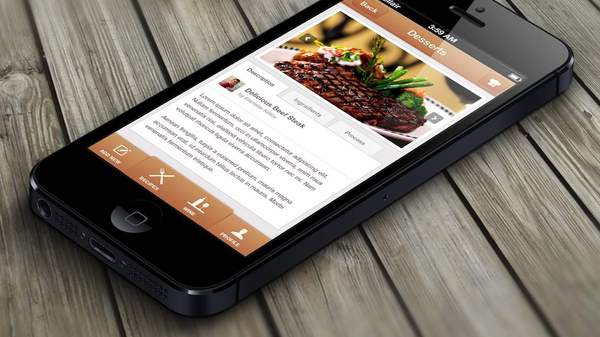Overview
Technology is now a player in how we carry out one of the bare necessities of life: eating and drinking. We've lately been enraptured by the thought of being able to 3D print our food (the 3D chocolate printer is already among us, while the 3D pizza printer is just around the corner). And the excitement isn't just based on our own appetite for novelty foodstuffs; these are technologies with the capacity to help us through the global food shortage.
Yet the internet and mobile technology that's ubiquitous right now has already changed the way we eat — in some very positive ways. We take a closer look at the apps and websites that are helping people reduce waste, save time and be better informed.
We Can Make Less Waste
According to the 2009 study, What a Waste! from the Australia Institute, Australians throw out 4.45 million tonnes of food every year, or in dollar terms, $5 billion. If this makes you wince a little, but not enough to start composting or dumpster diving, the internet may be your saving grace. Websites such as Germany's Foodsharing.de are harnessing the web to connect individuals who would prefer to share their excess food than turf it. Their only rule is that you offer food you would eat yourself. Here in Australia similar sites like Fare Share and Second Bite, aimed at collecting food from supermarkets and farmers to be redistributed to those in need, are reducing this inefficiency.
Taking a different tack, Sydney's HelloFresh, a new online service, is making judicious grocery shopping easier. With new menus each week, they deliver only those ingredients required for a particular meal. As Tom Rutledge from HelloFresh put it to us, "By packing precise amounts of ingredients we supply only what is required for the recipes. Gone is the need to buy a big jar of capers when you only need a tablespoon. The customers save money and there are no nasty surprises lurking at the back of the pantry when it comes time for a spring clean."
Aussie Farmers Direct makes a good case for the internet's role in reducing waste, as their buying is done after customers' orders are placed online. Internet grocery shopping in general wins over bricks and mortar outlets, because perishable products are not simply displayed on the off chance that a shopper is making leak soup this week.
We Pay with No Money
Apps such as Beat the Q allow queue-averse customers to pre-pay for their coffee en route. They simply pick it up and go. CLIPP app allows barflies to run a tab from their phone without ever flashing cash or card. While this may be extremely convenient, it will also encourage higher spending — a phenomenon called hyperbolic discounting means people are likely to buy more if they don't have to pay until the end of the night.
Apps such as these, along with Paypal's payment processor and Square.com are making a cashless future not only possible but, according to Adam Theobald of Beat the Q, inevitable. "In coming months, consumers will be presented with a large number of e-wallet alternatives," he told us. "Imagine your bank, telco, ISP, Google, Apple, Mastercard, Visa, Amex all offering you a great incentive to use their mobile wallet."
Though the payment interaction is being reduced to the touch of a screen, Theobald doesn't think that technology is taking away from the human interaction. "I'm not sure about you, but I am much better to talk to if I haven't waited, and have a coffee in my hand!" he says. He figures the 10,000 customers registered with his app must feel the same way.
We Know All the Things
And then, of course, technology is giving customers better access to information. The internet is allowing smaller ventures to succeed by connecting with punters to let them know their changing hours and locations. Hungry Mondays is a collection of Sydney restaurants (started by El Capo) who slow cook meat on a Sunday and offer vacuum packed meals the following Monday for pickup from a range of changing venues (the Hollywood Hotel, the Lord Wolseley), which are spruiked on Facebook. The nomadic food trucks of Sydney rely on their online communities to advertise times and locations, as do pop-up venues. While bloggers and review sites such as Urbanspoon and Eatability may strike terror in the hearts of restaurateurs, they give a fuller picture of a venue for diners.
As well as advice on where to eat, technology is helping customers with what to eat. The Traffic Light Food Tracker app, released by Cancer Council Victoria, allows consumers to scan the barcode of a product and immediately receive a red, orange or green light from the app according to the product's nutritional value.
Prevailing ideas about the future of food culture tend to polarise into either a fast food dystopia of mindless Cheezel consumption or a slow food utopia in which we harvest quinoa each morning from our organic hobby farm in Tasmania. But there is a happier medium, where technology speeds up boring activities like shopping and paying and gives us more time to enjoy food.
Top image by Binpress.
